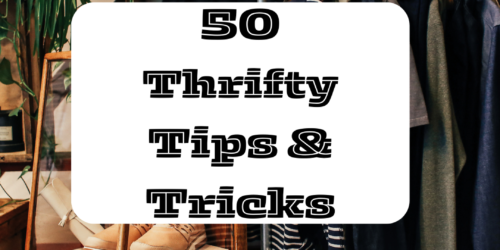Start Your New eBay Side Hustle Today
Let’s get your eBay side hustle off to a great start and make some money today.
It has been January for about a year and a half now, and if your New Year Resolution was to start bringing in a little extra cash in your spare time, there is no better time to get started. Here are the five things you need to do to start making money on eBay.
1. Don’t be afraid of the “New Tax” headlines
Many of us will have seen the news recently about HMRC now having the power to peek at everyone’s eBay income.
This has scared a lot of would-be resellers, but you needn’t quit the game before you have even gotten started. The tax laws are the same as they have always been; there is no new tax in place here. The only thing that has changed is that eBay – along with Airbnb, Vinted, and a number of other businesses, are now obliged to share their numbers with HMRC.
And; if you are selling less than 30 items a year or make less than £1,770, your info will not be passed on to HMRC.
Martin Lewis explains it all perfectly (of course he does, he is the Money Saving Expert) here.
But if you do plan on making this a success (and why would you not?) then you will need to register with HMRC as a business so that you can pay your taxes when the money starts rolling in.
2. Do some Research
What is it that you want to sell?
Do you love vintage clothing, (I do!) or are you more of a bric-a-brac rummager?
Or are you living in an area with lots of furniture outlets that you can browse for valuable finds?
If you can find something that will keep you interested, you are more likely to want to keep going with your new venture.
Some people out there have had great success with hard-to-find car parts, or glass paperweights, or porcelain dolls. There really is no limit to the range of items you can find to resell – but if you know a little bit about what you are looking for before you start, the hunt will be a lot easier.

There are three ways I like to research;
- Browse the “sold” items on eBay. This is a great starting point when it comes to that vital brand research. If you look at what glass paperweights have sold recently, for example, you can then search the web for sites dedicated to the big name glass paperweight makers (there are fan sites for everything!) This will give you a bit of an edge when you are hunting through the charity shops and think you might have found something special.
- Search online for charity shops, boot sales and fairs near you. If you are planning to go charity shopping this weekend, for example, you will want to check if your local shops are open!
- Watch some videos on Youtube. We have a few favourites; The Luxury Pickers are a couple who make a living trawling charity shops for high end (like really high end) clothing – and they are a goldmine of brand info. If vintage toys and games are more your thing, we also love Master of Pieces , who can rummage through a box of broken bits and find some really valuable items to sell. Both are fun to watch and give great encouragement if you are just starting out.
3. Have Your Storage Sorted
When we first started selling on eBay, we kept our listed items nice and clean in two or three large plastic boxes. As they sold, it wasn’t too difficult to find what we needed and get it posted.
However, as we sold more, and bought more, and then sold more, and bought more again, our collection of stock outgrew it’s storage area.
Sometimes when we had two or more very similar items listed, it was hard to find the right one when it came to packing up.
We solved the issue by sealing each item into its own separate, numbered bag, and then storing those bags in numbered boxes. The bag number can be added to the eBay listing in the form of a “SKU” (stock keeping unit – I have literally just now found out what SKU stands for.) Then when an item sells, you can find it easily – and reuse the bag for the next item you list.
Finding “item number 1343” is much easier than finding “blue floral vintage dress” in a box of similar dresses.
If you want to use a similar storage system, you will need;
- Some large plastic boxes with lids (start with one or two and add more when you need them.)
- Resealable plastic bags (make sure they are large enough to store your items.)
- Sticky labels
- A permanent marker
Bear in mind that if you are selling clothing, it does take up space, especially when you have a few hundred items listed. If you are lucky enough to have a spare room, attic, or dry garage/shed, it is going to fill up with boxes pretty fast. Be ready!
4. Be Package-and-Post ready
Sometimes, there is a bit of a wait with eBay selling. You might list an item and sell it a few days/weeks/months later.
Other times, you list it and someone snaps it up before you have even sealed it into it’s storage bag.
If that happens, are you ready to post?
Have you checked out what would be the easiest postal service for you to use, and double checked their prices? Bear in mind that if you can fold an item like a t-shirt flat enough, you can often save money on postage.
Do you have the packaging materials that you need to get that item safely to the buyer?

Don’t forget, it is totally acceptable to reuse packaging materials; you don’t need to stock up on supplies when you are just getting started. As long as you have something that will keep the item safe, clean and dry during it’s journey – and some way of clearly marking the address on it – then you are good to go.
5. Find Something to Sell – And Get it Listed
It is very easy to get carried away with the buying of stock, but the money won’t come in until you actually sell it. Worth bearing in mind when you are filling the house with amazing charity shop finds!
Listing can be a drag, but it has to be done.
The more listings you have, the better –
BUT
Your listings need to entice buyers.
Take the time to take good photos, in good light. Many resellers will tell you that you need a mannequin for your photos if you want to sell clothing, but you don’t need to go looking for one just yet (they aren’t cheap!)
Lay your clothing flat on a clean surface (not a bed!) or hang it on a hanger against a plain background.
Take loads of pics, both of the item as a whole and of all the small details such as cuffs, buttons, and the care label.
Include measurements in your listings, as sizes differ between brands and people often want to check something will fit well before they buy. One way to do this is to lay a measuring tape on top of the item and include that as one of your photographs.
Give as many details as you can, both in the heading and in the description. I have never been tempted by an item listed as “Jumper Grey 12” but if the same item was listed as “Womens Next Jumper Size 12 Grey Wool Buttoned Cuffs” I’m definitely clicking for a closer look.
How often should you list? eBay seems to like it when you list regularly. We have definitely noticed a more steady rate of sales when there are a few listings made each night, as opposed to twenty listings made once a week. So, if you have ten items to list, think about listing two each night rather than all at once.
Finally; have Patience
Selling on eBay has been a real life-changer for us, but it didn’t happen overnight.
Your buyers will find you, but eBay is a big place and it can take a while. Research items before you buy so that you can list with confidence, and don’t panic if there is the odd slow period.
Your new eBay reselling side hustle is ready to go – best of luck!






